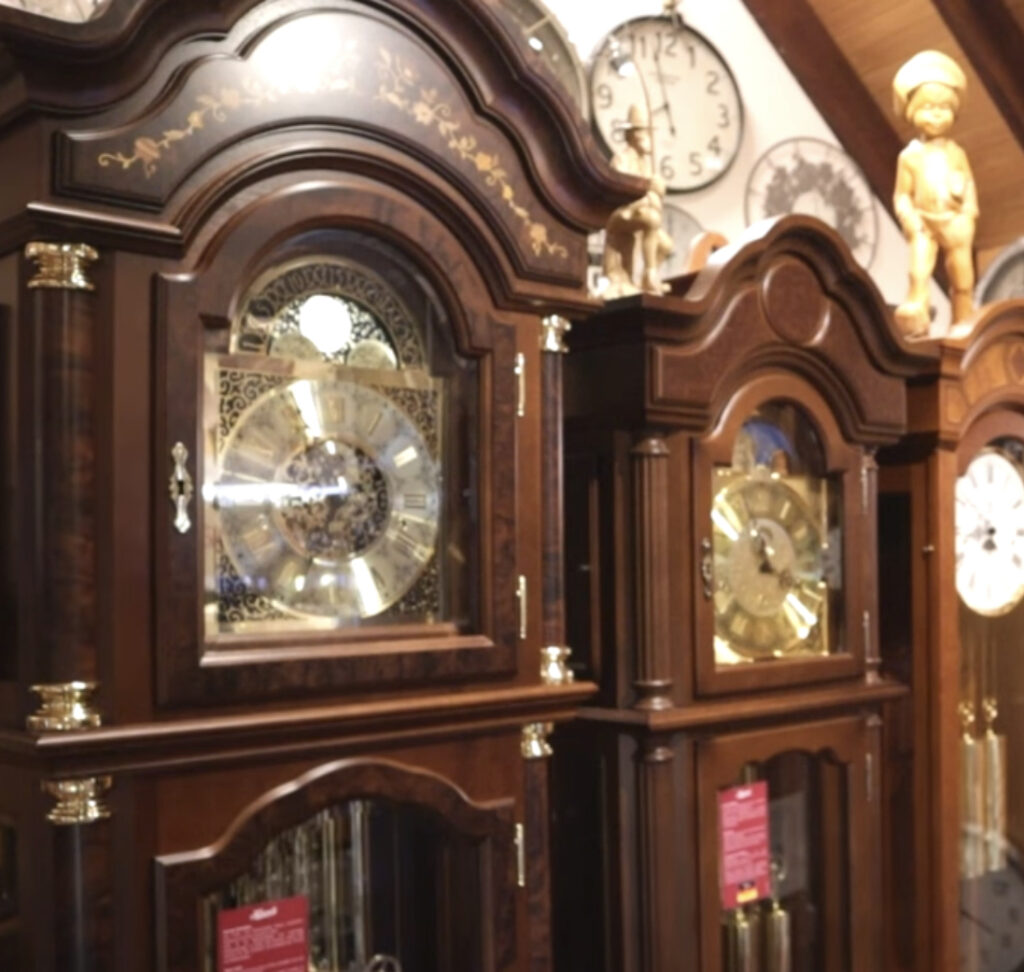In the times leading up to the 20th century, the world held grandfather clocks in high esteem for their unparalleled accuracy. These timepieces, renowned for their precision, were benchmarks for both households and commercial enterprises.
What Are the Dimensions of a Grandfather Clock?
Historically, a conventional grandfather clock stands between 180 to 240 cm (72 to 95 inches) tall. Their width typically spans from 43 to 81 cm (17 to 32 inches), while the depth varies from 25 to 53 cm (10 to 21 inches). However, these measurements largely hinge on the specific style of the clock. For a traditional design, Premier Clocks offers the following specifications:
The Dimensions of a Grandfather Clock Top Part
The uppermost section of a grandfather clock, referred to as the hood or bonnet, comprises two main parts: the crown (upper segment) and the face (front segment).
The Hood Dimensions
This top portion measures between 38 to 53 cm (15 to 21 inches) in size.
The Crown and the Face Dimensions
The clock’s face occupies roughly two-thirds of the hood’s space, leaving the remainder for the crown. It usually features elements like winding holes, either Arabic or Roman numerals, and volume controls.
The Moon Dial Dimensions
A select number of grandfather clocks are adorned with a moon dial situated above the main clock dial. These moon dials are typically sized between 10 to 18 cm (4 to 7 inches).
The Dimensions of a Grandfather Clock Middle Part
The clock’s midsection, termed the waist section or trunk, houses the primary mechanical workings of the clock. This includes pivotal components like the pendulum and the weights. This section is notably the most substantial part of a grandfather clock. Standard clocks generally possess three weights, though some variants only contain two. A lockable door is also present to safeguard these delicate mechanisms.
What Is the Length of a Grandfather Clock Pendulum?
The pendulum, an integral component, largely influenced the design and form of these clocks. The necessity to accommodate the clock’s movements led to the creation of the longcase design. A standard pendulum stretches approximately 1 meter (3.2 feet) in length. The duration of a pendulum’s full oscillation is termed its period. For a classic grandfather clock, this period lasts close to two seconds.
The Weights Dimensions
Wall-mounted pendulum clocks, precursors to today’s grandfather wall clocks, posed challenges due to their hefty lead weights. The invention of longcase clocks was a solution, designed to bolster these more massive mechanisms. Each weight in the clock has a distinctive heaviness, determining its placement and rate of descent. The cylindrical casings of these weights vary from 2.5 to 7.5 cm (1 to 3 inches) in diameter and are 23 to 26 cm (9 to 10 inches) in length.
The Dimensions of the Base
Base dimensions display a broad range, stretching from 13 to 41 cm (5 to 16 inches).
In Conclusion
Grandfather clocks, with their majestic stature and intricate mechanics, have long been cherished as marvels of engineering and artistry. Spanning from their lofty hoods down to their solid bases, these clocks represent more than just instruments to tell time. They are testaments to human ingenuity and the desire for precision in an era preceding modern technology. Each section, be it the crown, face, or the vital pendulum, reflects a careful balance of function and form. While their relevance as primary timekeeping devices has waned with the advent of more advanced technologies, their cultural and historical significance remains undiminished.
They are emblematic of a bygone era, standing as silent witnesses to the passage of time, evoking nostalgia and admiration in equal measure. Today, these timepieces are not just valued for their utility but also for their aesthetic appeal, intricate craftsmanship, and the stories they hold within their ticking hearts. For collectors, historians, and enthusiasts alike, grandfather clocks will forever remain timeless treasures. Whether housed in stately mansions or showcased in museums, they continue to captivate and enchant, reminding us of the relentless march of time and our perpetual quest for its mastery.
